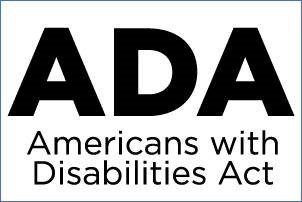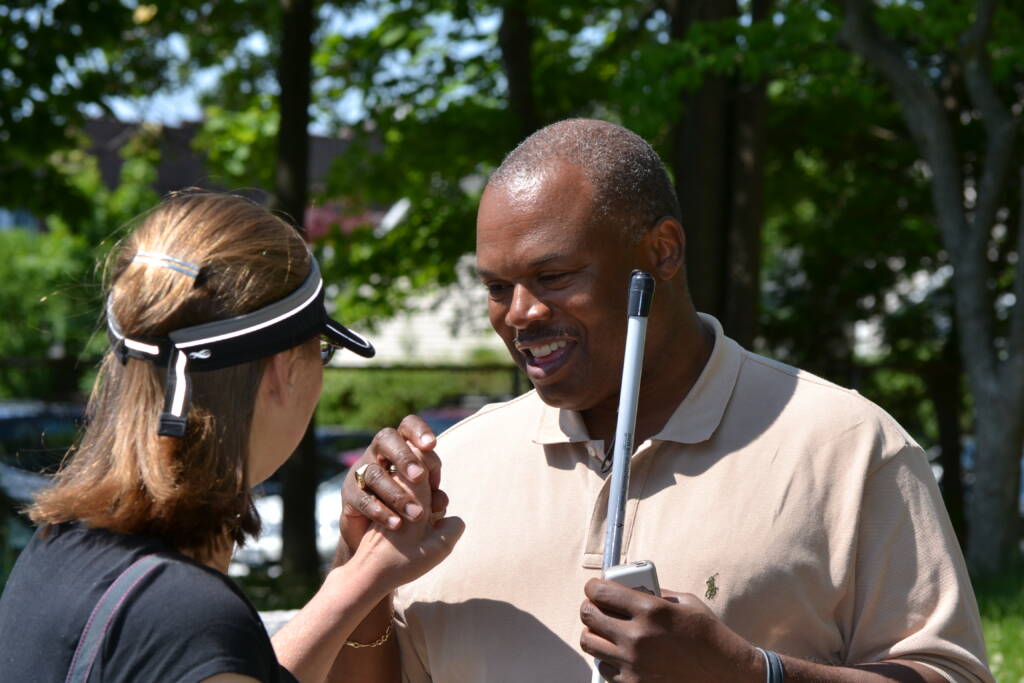What is the Americans With Disabilities Act?
This video is an overview of the ADA.
Overview of the Americans with Disabilities Act, ADA.
The Americans with Disabilities Act, otherwise known as the ADA, was passed in 1990. The law aimed to prevent discrimination and provide legal protections for people with disabilities. As we know, discrimination takes place at places of employment, within educational settings, or in public spaces. The goal of the ADA is to ensure that people with disabilities are treated equally and have access to the same opportunities as everyone else. The ADA is comprised of five titles. Title one focuses on employment. Title two outlines the responsibilities of state and local governments. Title three covers public accommodations that businesses open to the public are required to provide. Title four is concerned with telecommunications. Title five contains miscellaneous provisions not covered in the previous four titles. [End of Transcript]
Disability Definition
This video covers the disability definition.
Definition of a Disability under the ADA.
The ADA defines “disability” in three ways. First, a person who has a physical or mental impairment; more on that later. Second, a person who has a history or record of such an impairment. Third, a person who is perceived by others as having an impairment. The biggest factor in defining disability is whether the impairment limits one or more major life activities. For example, if you are deaf, you cannot hear. If you are blind, you cannot see. If you have a physical disability, you might struggle to walk. If you have a mental disability, you might have difficulty learning. The point being, if your impairment prevents you from working, accessing education or opportunities in the public space, then you may have a disability as outlined in the ADA. There is no exhaustive list of what counts and does not count as a disability. The definition was purposely vague. It has less to do with actual diagnoses of disability. It has the flexibility to be able to consider individual circumstances. [End of Transcript]
ADA Title I: Employment
This video takes a deeper look into Title 1 and what it covers.
Americans with Disabilities Act (ADA) Title 1.
Now I’ll delve a little deeper into the specifics of Title 1 and what it covers. Title 1 is concerned with employment. Title 1 and its requirements are only applicable to companies that have 15 or more employees. If a small business has less than 15 employees, they are not required to follow the provisions in Title 1. Title 1 aims to ensure that people with disabilities and their non-disabled peers are treated equally. Discrimination against people with disabilities can take many forms in the workplace. Discrimination can happen during recruitment, the interview phase, when being considered for a promotion, pay inequality, and by other means. Let me give you a concrete example of what I’m talking about. Suppose an individual who is deaf is hired. The company must provide them with what the law calls, “reasonable accommodations.” However, if a specific reasonable accommodation is too expensive and will cause the company an “undue hardship,” then they are not required to provide that specific accommodation. The Equal Employment Opportunity Commission, EEOC, is the federal agency responsible for oversight of the ADA. If you experience discrimination in the workplace, you have 180 days from the date of the incident to file your complaint. The EEOC has regional offices throughout the country. Find the one closest to you and file your complaint there. [End of Transcript]
ADA Title II: Public Service
This video takes a deeper look into Title 2 and what it covers.
Americans with Disabilities Act (ADA) Title 2.
Title 2 covers public services that are provided by State and Local Governments. Title 2 ensures that all states and cities, regardless of their size, resources, and budgets, make their services accessible to people with disabilities. Cities and states are mandated to make sure people with disabilities have equal access to their programs and services. Services include public education, civil service jobs, public transportation, government sponsored events, hospitals and health care, social services, the courts, elections, town halls, etc. All of these services must be accessible to people with disabilities. As a more concrete example, if the city decides to construct a new building or is renovating an old building they must follow the ADA’s architectural guidelines to ensure the building is physically accessible. If there was to be an event held on the second floor, but there is no elevator in the building, the event would have to be moved to the first floor, making it accessible to everyone. However, there are some exemptions. If the government can prove that the accommodation requested is too pricey, they can be exempted from providing it. The United States Department of Justice, DOJ, is responsible for overseeing and enforcement of Title 2. If you experience discrimination as related to a public service, you can file a complaint with the DOJ. Alternatively, you can file a lawsuit with local, state, and federal courts. As with the EEOC, you have 180 days from the date of discrimination to file a complaint. [End of Transcript]
ADA Title III: Public Accommodations
This video takes a deeper look into Title 3 and what it covers.
Americans with Disabilities Act (ADA) Title 3.
Title 3 covers Public Accommodations. This includes private businesses and nonprofit organizations that do not fall under the scope of government services. For example, Title 3’s provisions cover restaurants, stores, hotels, movie theaters, private schools, doctors’ offices, convention centers, homeless shelters, train stations, airports, zoos, funeral homes, day care centers, stadiums and arenas, gyms, uber, megabus, and other private transportation companies. All of these types of private businesses cannot discriminate against people with disabilities. They cannot exclude, marginalize, or treat any person with a disability differently than they would a person without a disability. These places, including doctors’ offices, must be physically accessible to the public. Meaning, if they have stairs they must have a ramp and their doors must be wide enough to accommodate a wheelchair. If there is a physical barrier that bars access to the service, the business is required to renovate their space to make it accessible. All new construction must adhere to the ADA’s Architectural Guidelines. In addition to making spaces physically accessible, places of business must also make their means of communication accessible. They should have information in braille for individuals who are blind and should also hire an ASL interpreter for those who are Deaf. These accommodations are provided to ensure effective communication. Title 3 also covers job training programs, like vocational rehabilitation, and private courses to obtain special certifications or licenses. You have a right to participate in your community and take advantage of all it has to offer. If you feel you’ve been discriminated against you can contact the Disability Rights Section of the US Department of Justice, which is located in Washington, D.C. You also have the right to file a lawsuit through the court system. [End of Transcript]
ADA Title IV: Telecommunications
This video takes a deeper look into Title 4 and what it covers.
Americans with Disabilities Act (ADA) Title 4.
Title 4 covers telecommunications, meaning access to the telephone, as well as provisions for making television accessible for those with hearing and speech disabilities. Title 4 required the establishment of the Telecommunication Relay Services, which includes the provision of TTYs, videophones, caption phones, and hearing carryover services. These services must be available 24/7, no exceptions. It also requires all federal Public Service Announcements, PSAs, to be captioned. Title 4 is enforced through the Federal Communications Commission headquartered in Washington, D.C. For more information or to file a complaint please visit their website for their contact information. [End of Transcript]
ADA Title V: Miscellaneous
This video takes a deeper look into Title 5 and what it covers.
Americans with Disabilities Act (ADA) Title 5.
Title 5 covers miscellaneous provisions. This section has additional and clarifying information not found in Titles 1 through 4. It also provides definitions for vocabulary found in the previous titles. For example, it defines the term “undue hardship.” It also outlines how the ADA interacts with other existing laws. For example, the Rehabilitation Act of 1973 supersedes the ADA. It also outlines how state agencies and others can qualify for exemption. In addition, it outlines what accommodations insurance companies are required to provide. Title 5 also prohibits retaliation and provides protections for those who feel they have been the victim of retaliation after they have filed a complaint. This title outlines who is responsible to pay attorney fees if a suit has been filed and won. It also contains a list of what is not considered to be a disability under the law. [End of Transcript]



